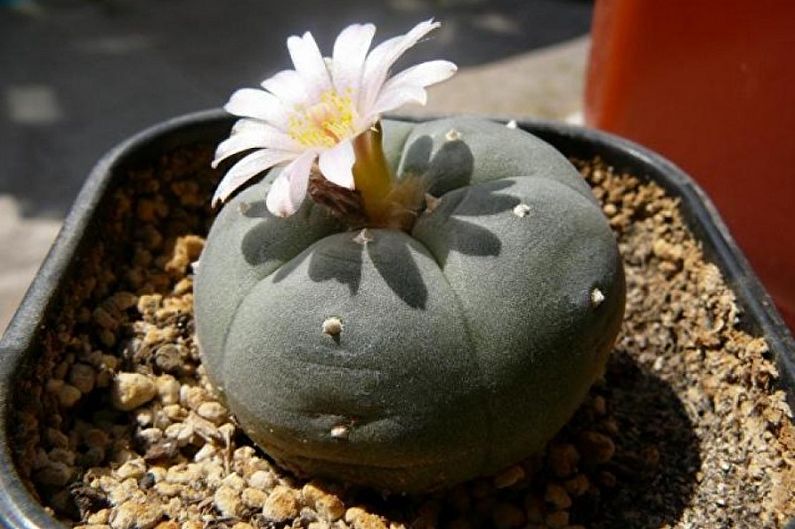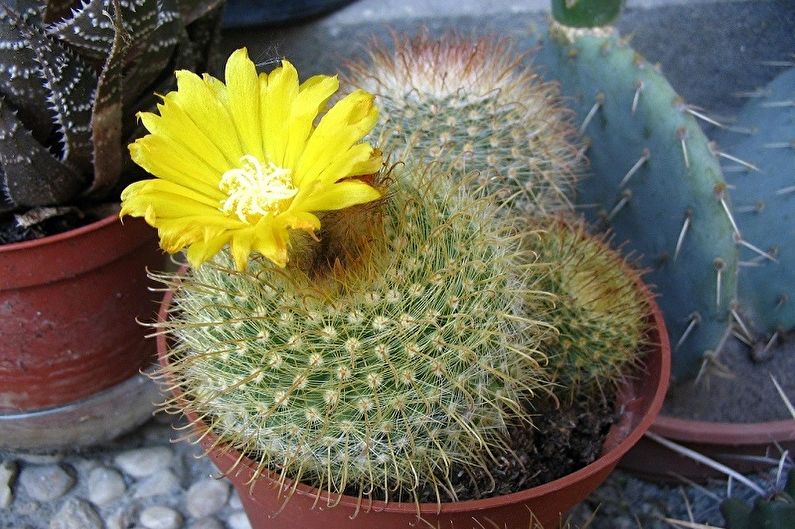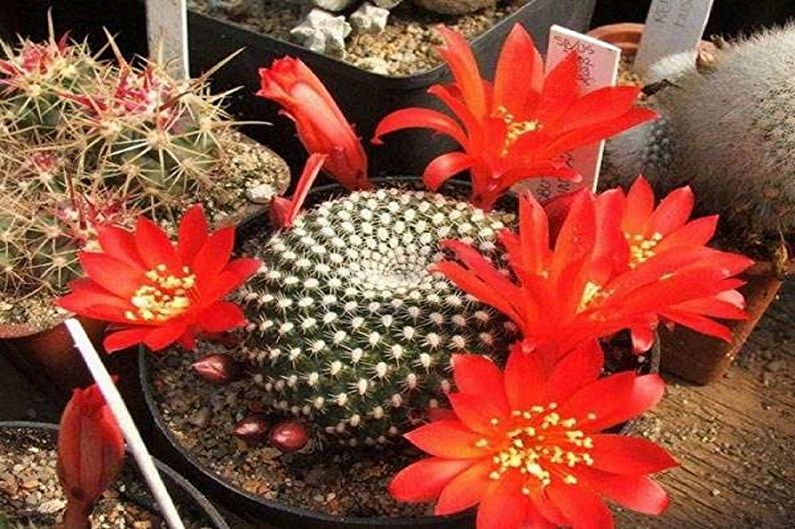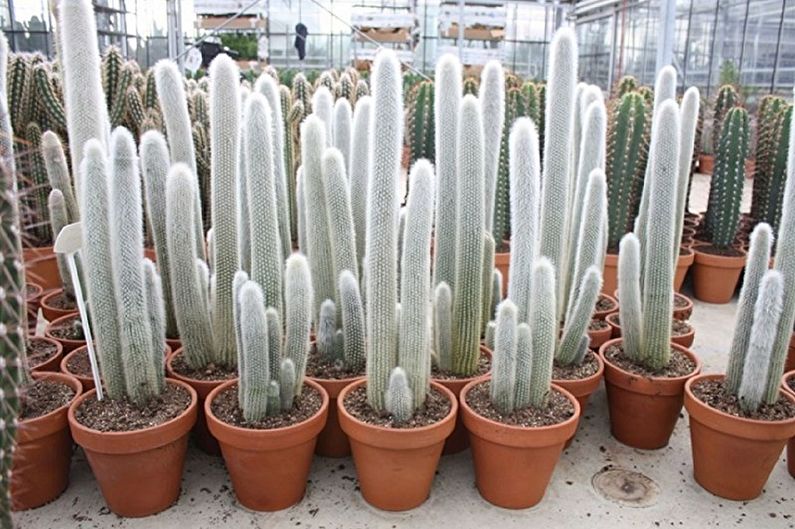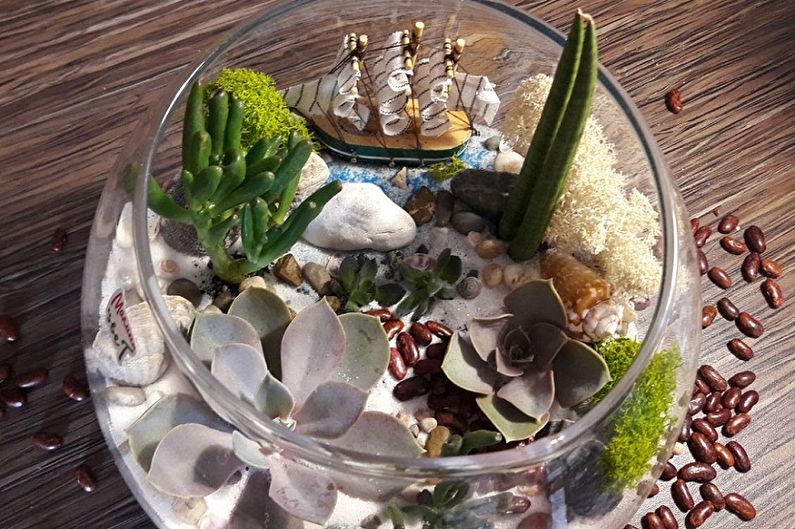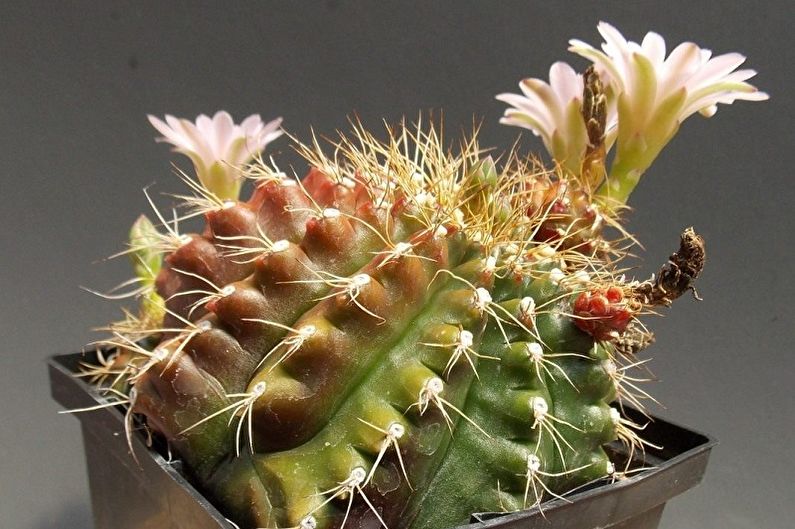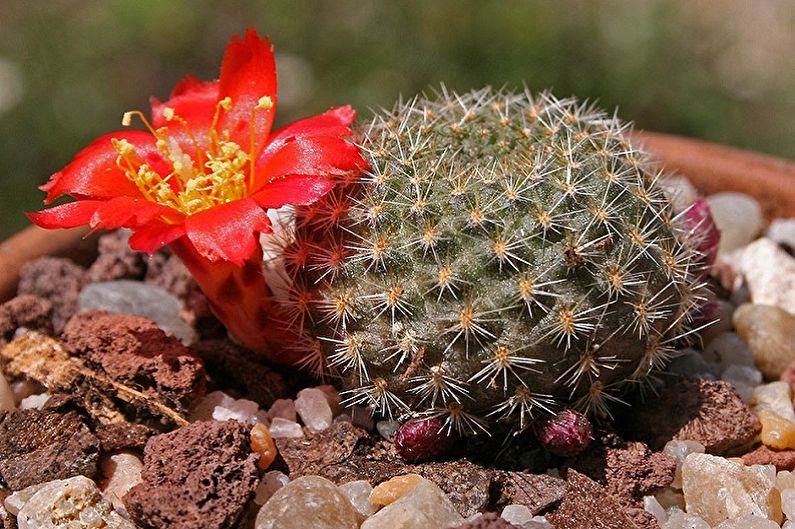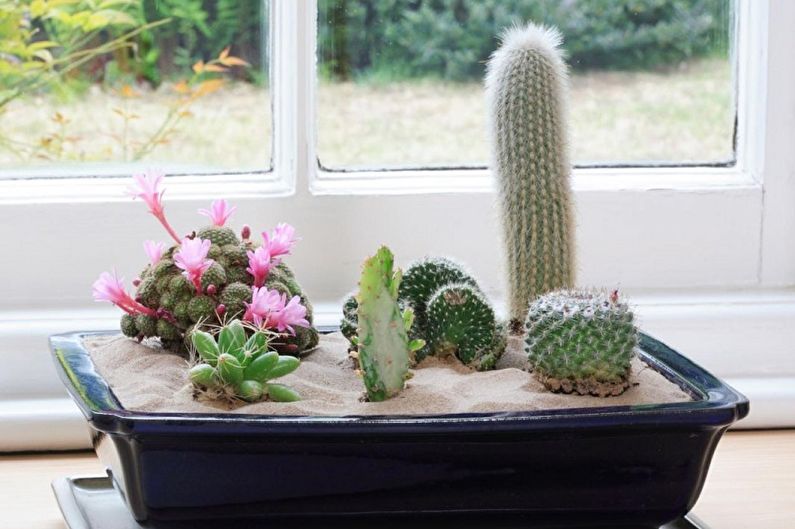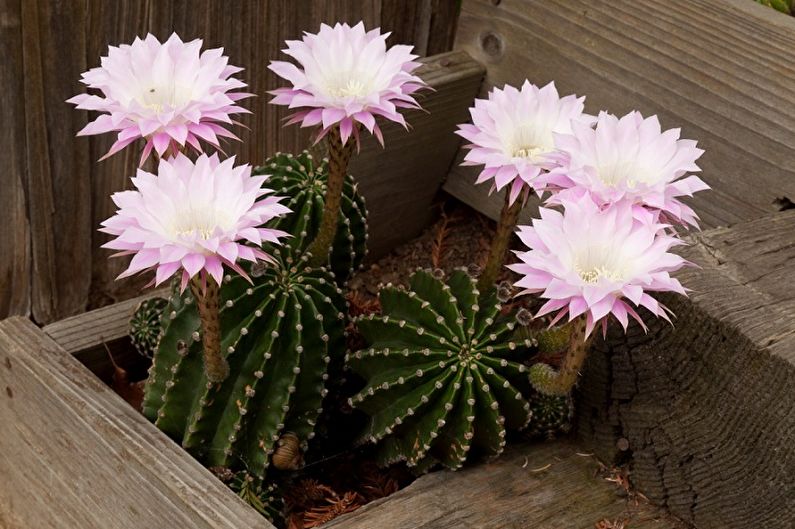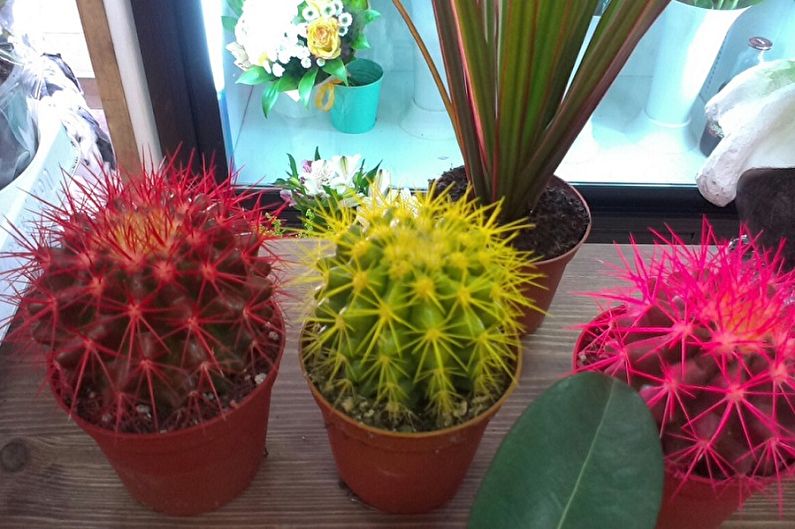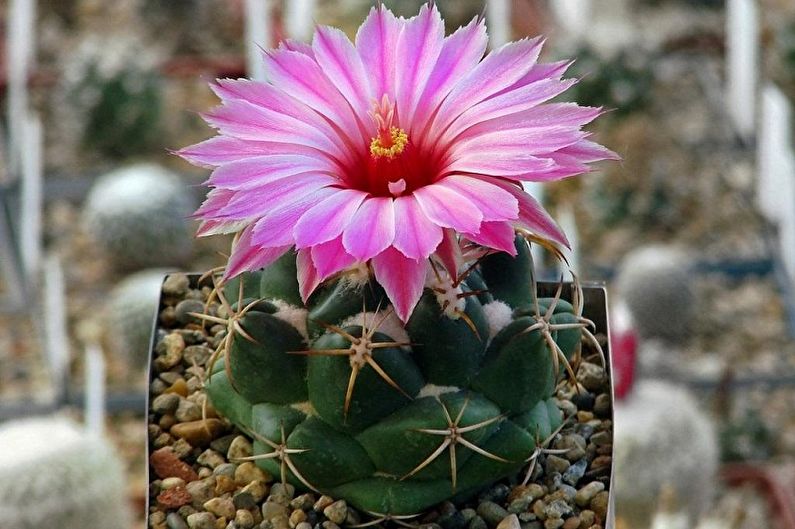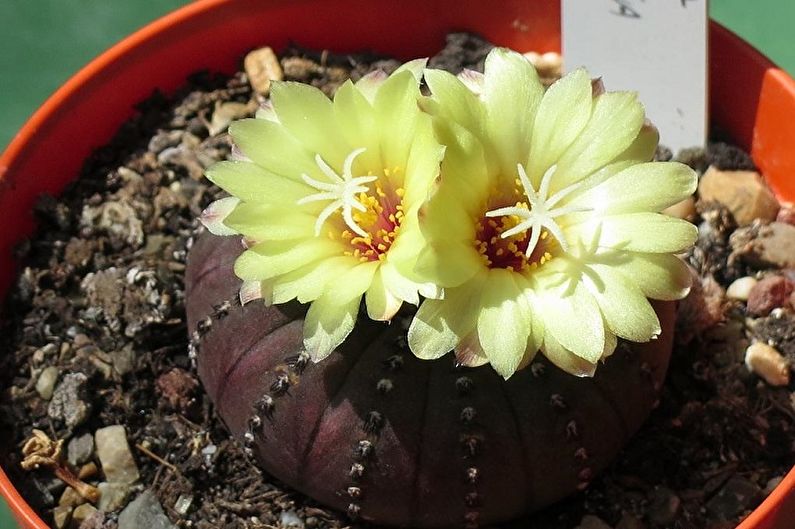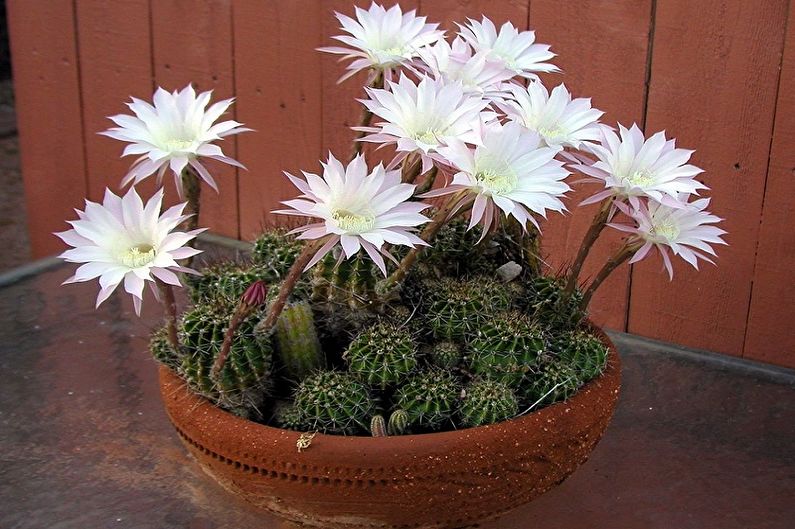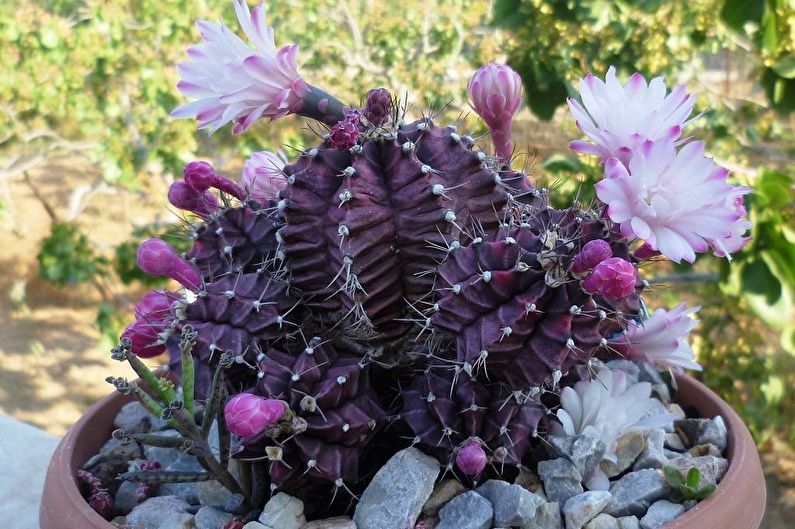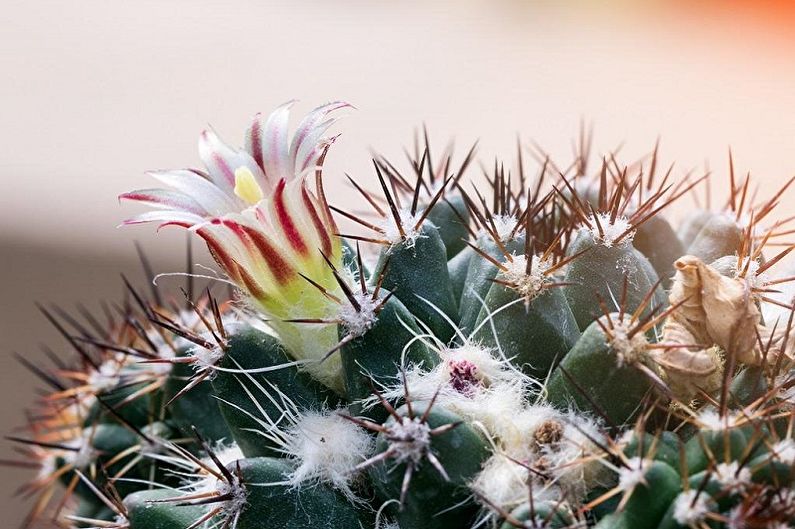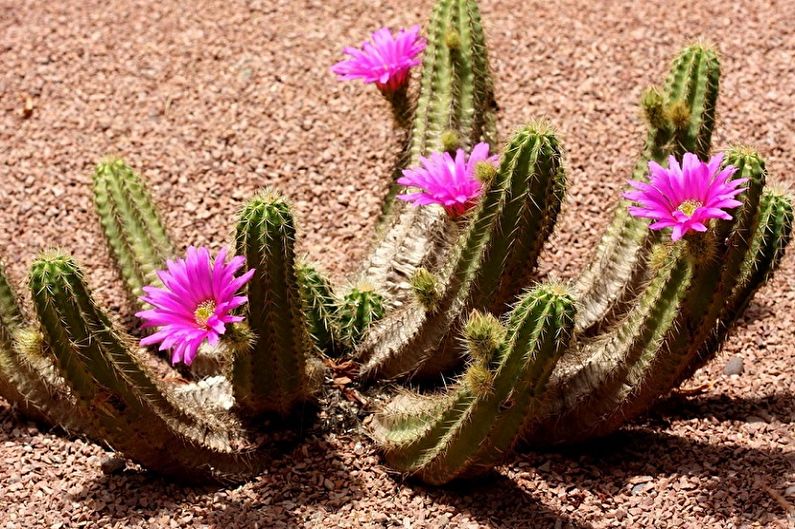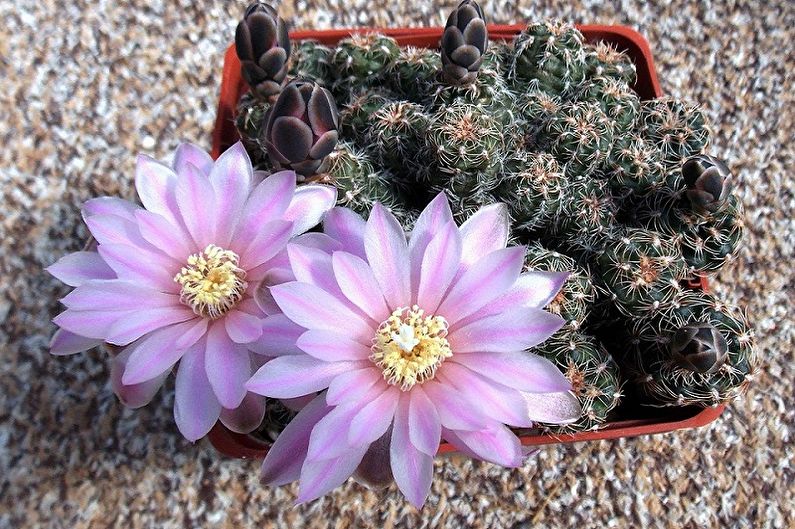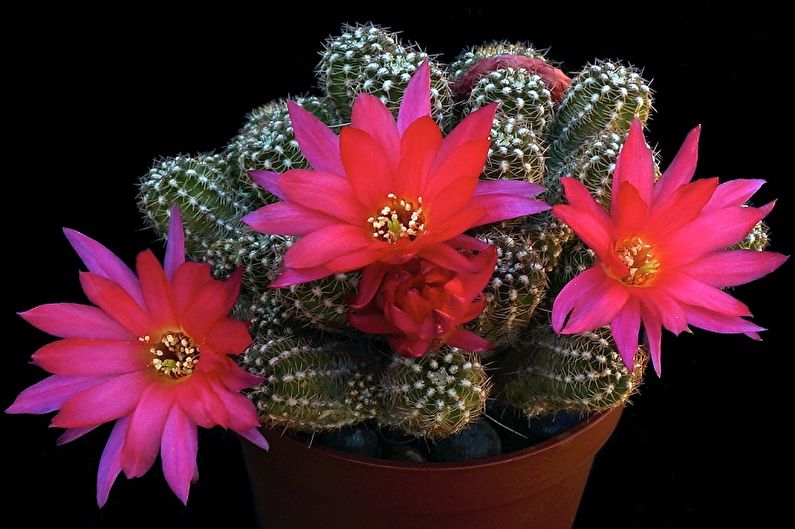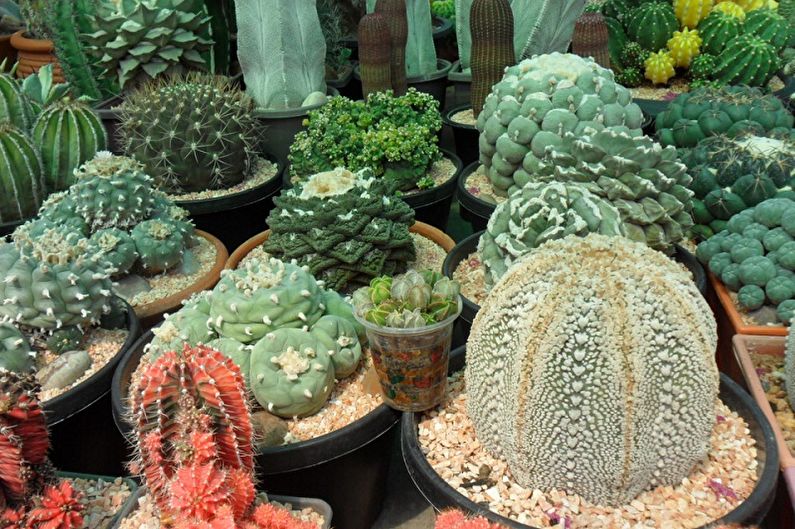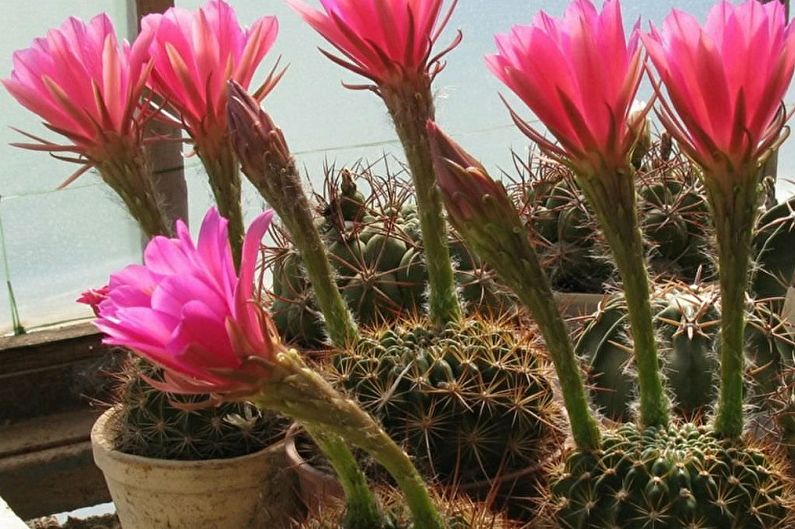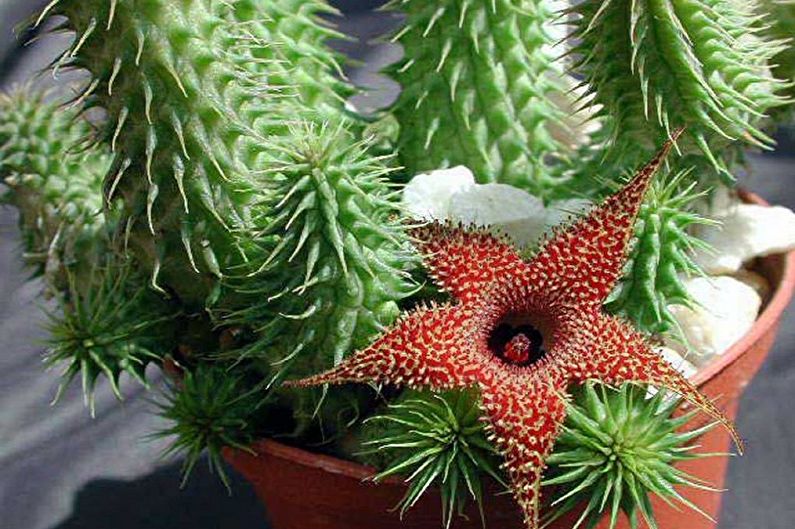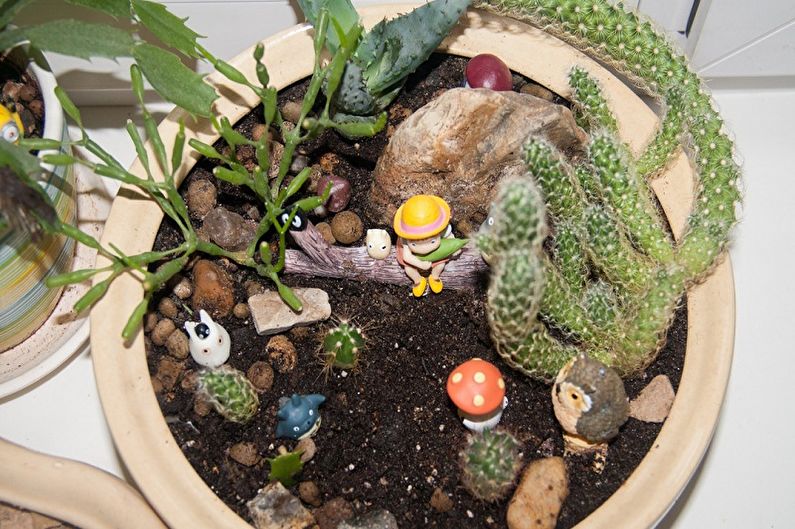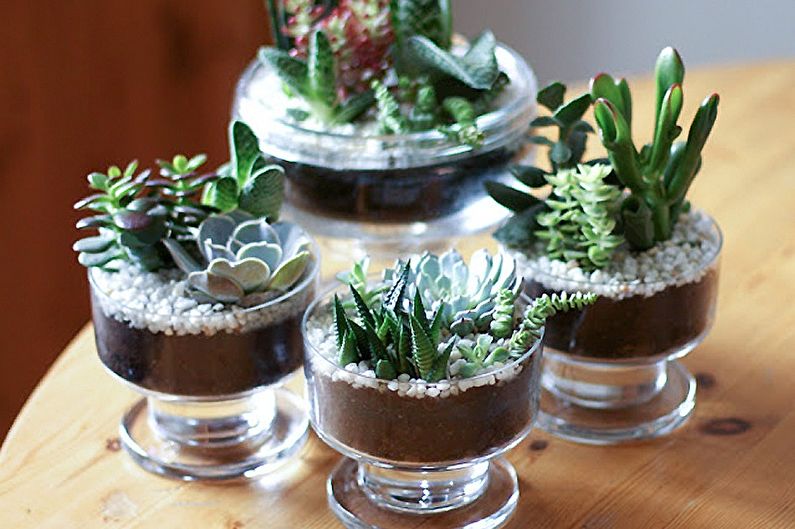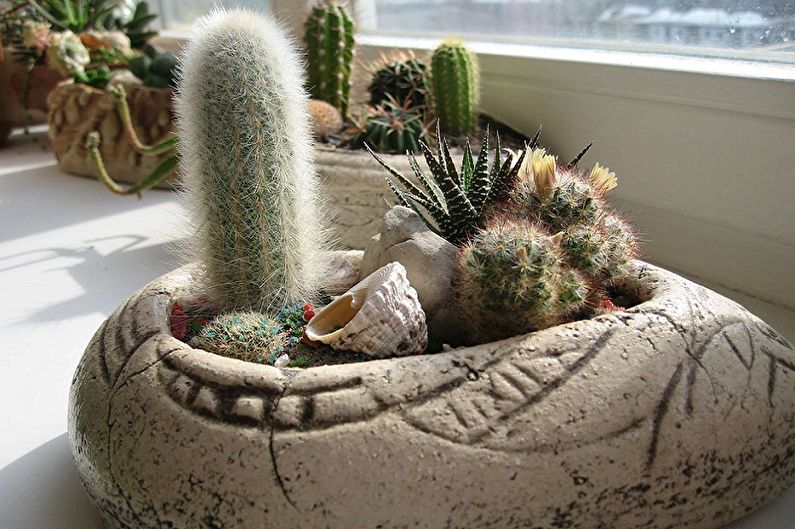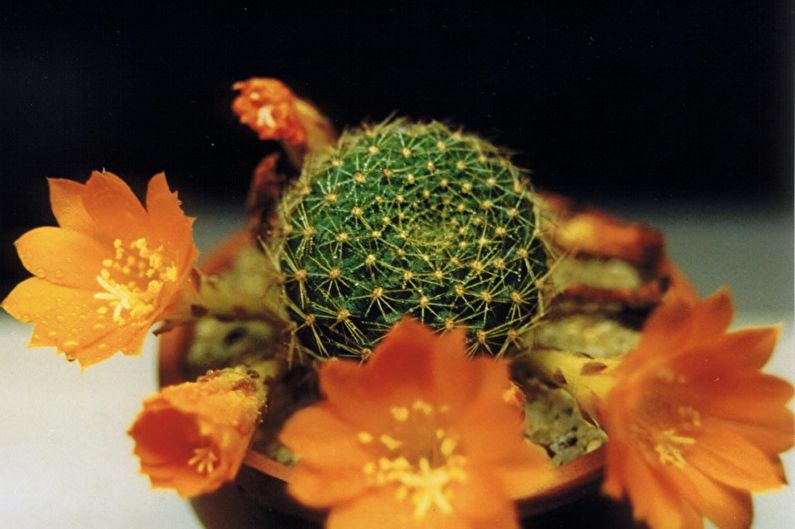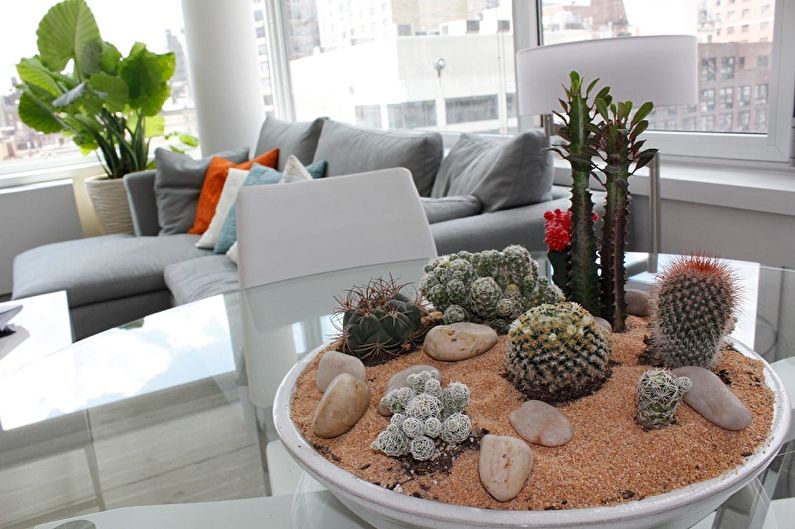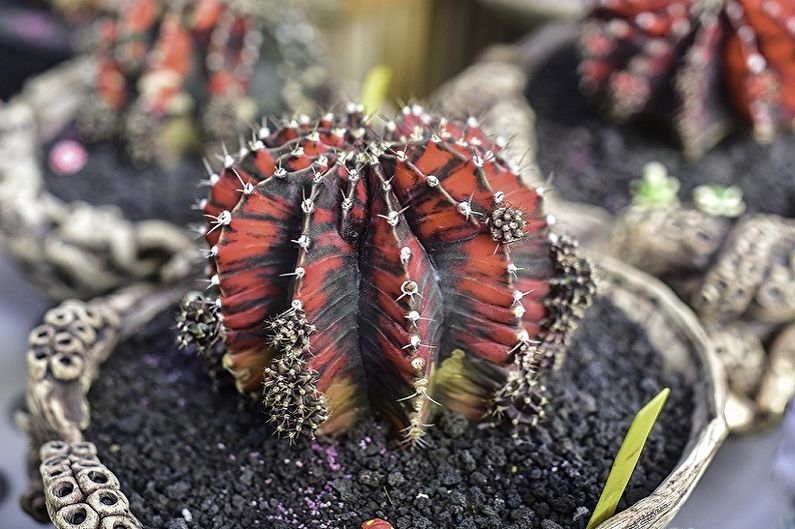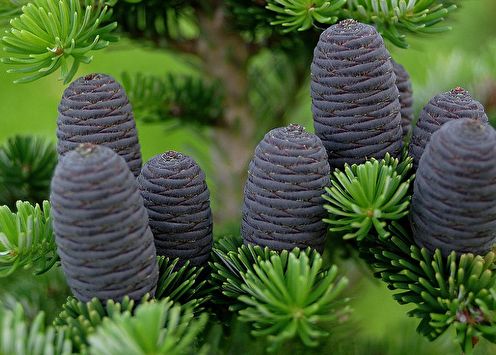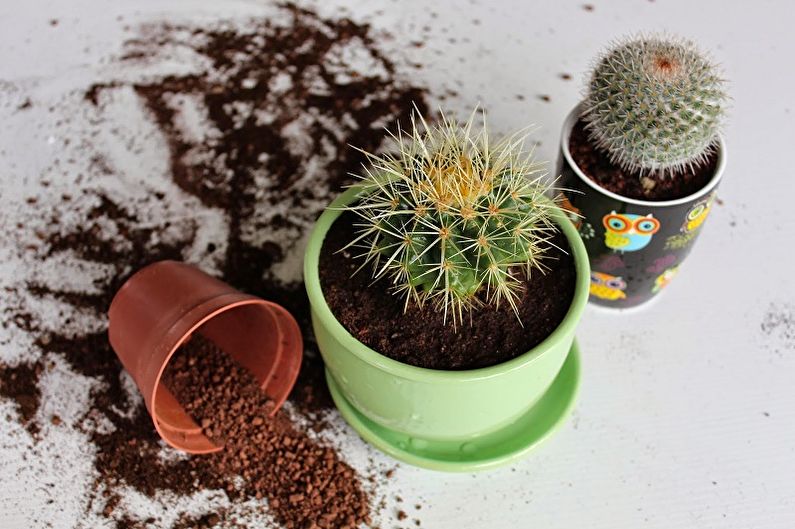
Almost everyone who asks questions about beautiful and unpretentious house plants, one way or another, come to the point of having a cactus. They are loved for their variety and unusual appearance. Around them there are many myths, beliefs and signs. It is believed, for example, that if a cactus suddenly blossomed, this is an important joyful event. Finally, this is a real find for those who dream of a home green corner, but they sorely lack time for complex and regular care.
General characteristics
Mexico is deservedly considered the birthplace of cacti. Although the origin of the species can be argued, it was here that first evaluated the properties of an unusual plant in all its glory.
Different varieties of cacti contain a huge amount of all kinds of substances, including alkaloids. By their nature, they have a pronounced antiseptic effect, prevent the development of fungi and pathogens. Therefore, they are used to manufacture various pharmaceutical and medical preparations for treating problems of the cardiovascular system, preventing hypertension and angina pectoris, and regulating blood circulation.
In folk medicine, cactus infusions are used to treat joints. Cactus juice has a pronounced tonic effect. It is used in drugs to stabilize the nervous system and treat disorders of the gastrointestinal tract.
The property of cacti is also known to neutralize the harmful effects of electromagnetic radiation from household appliances. Therefore, at one time they began to actively grow in offices and at home on computer tables.
Cacti are loved by collectors, designers and decorators. They can create complex compositions and real prickly gardens. And all this - with minimal effort and a waste of time.
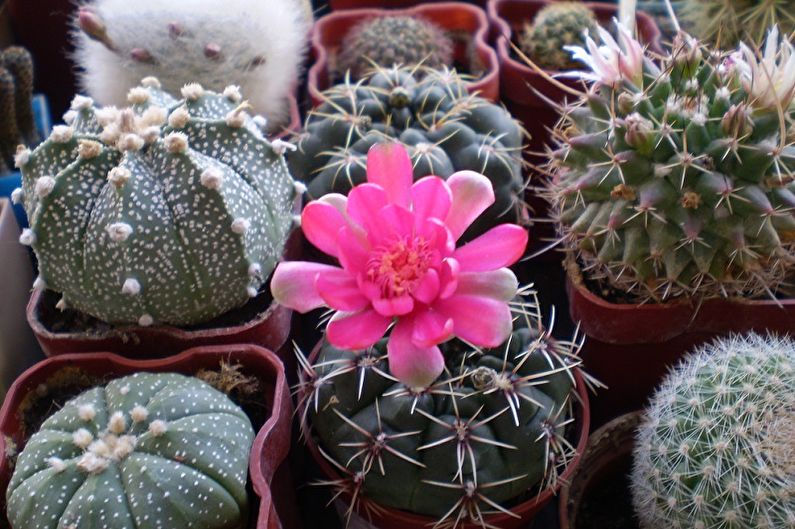

Types of Domestic Cacti
In the world there are about three thousand species of cacti. Not all of them are homemade. All of them can be divided into three broad categories. Opuntia are cacti with juicy small leaves that easily separate from the body. The shape of the spines differs in them. It is called glochidia. Peresievye - cacti with classic developed leaves. Cereus - varieties without leaves and glochidia.
Prickly pear
Pronounced representative of the same genus. The average height is 20-30 cm, but the shape and size depend on the particular species. This is one of the most extensive and diverse families. Red or white spines - unusual hooked shape.

Cereus
Another classic homemade cactus. He is very in demand in the design and interior design. It is suitable for complex compositions and gardens, but it also feels great on its own. Over time, it can grow up to a meter, but it will take far more than one year. There are varieties and subspecies with bizarre mutations, for example, Monstroseus.

Trichocereus
An adult plant is a tall meter column, which with age becomes not only higher, but also wider. Some varieties reach 1.5 m and above.
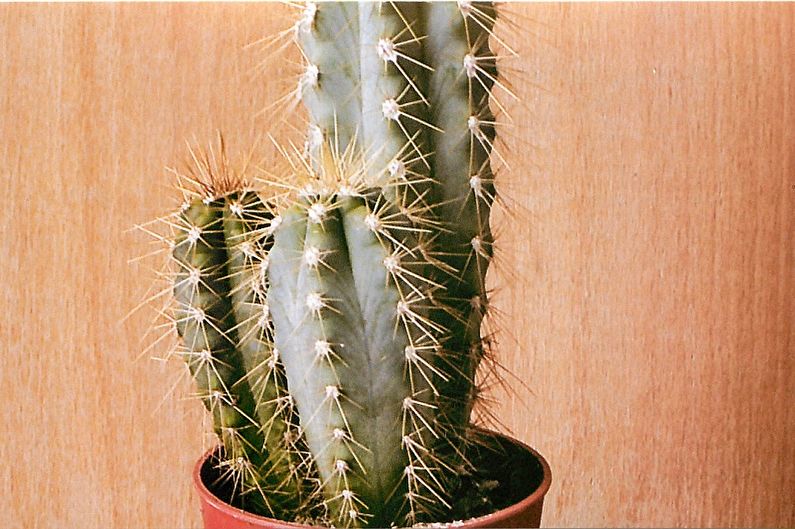
Echinocereus
This is a combed cactus that resembles a low spiky column. The average height of home varieties is 20–30 cm. Features of flowering depend on the particular subspecies.
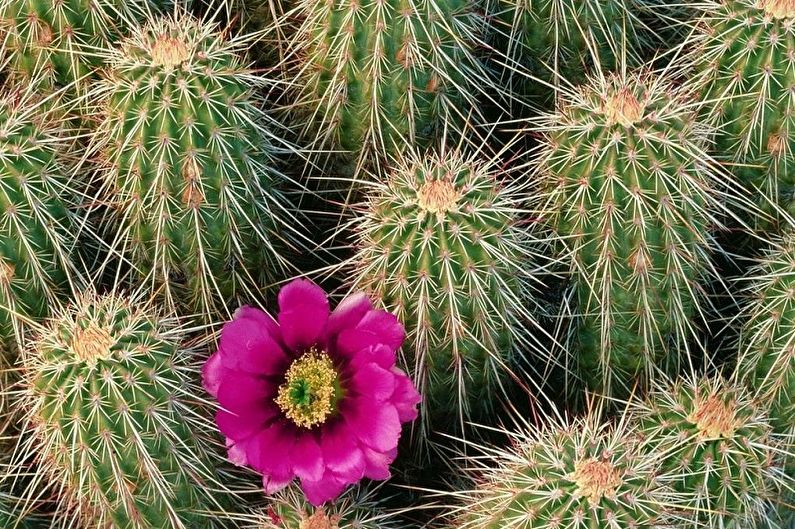
Chametereus Silvestri
This is a fast-growing and interesting cactus that grows significantly in the first years. In early summer, it blooms with bright scarlet flowers.
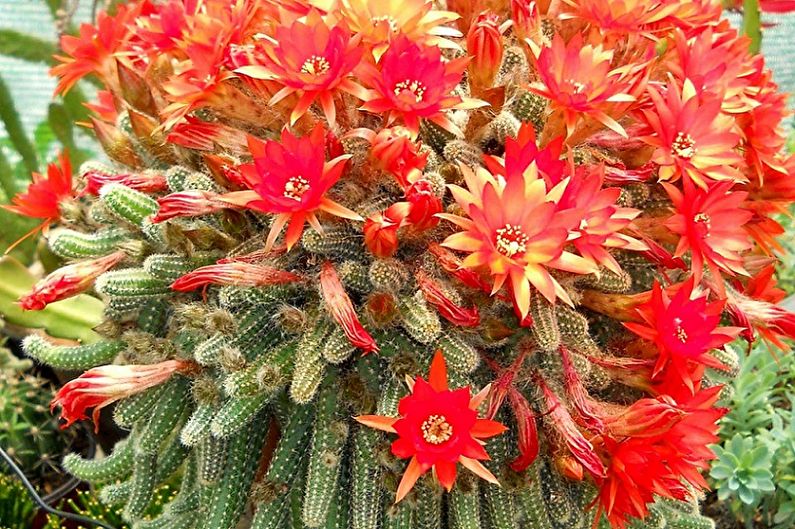
Aporocactus
This is an unpretentious and fast-growing lash-like variety with thin stems about a centimeter in diameter. Over the year, it grows by several centimeters. Large flowers appear in spring. Aporocactus can be grown in hanging planters and baskets.
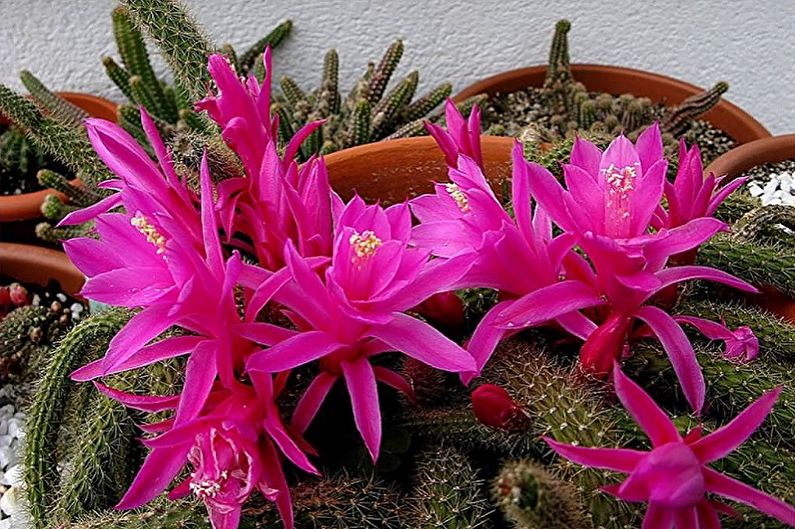
Mammillaria
A beautiful decorative silver variety blooms with white flowers that encircle the entire stem in a ring. The shape of the cactus is round.
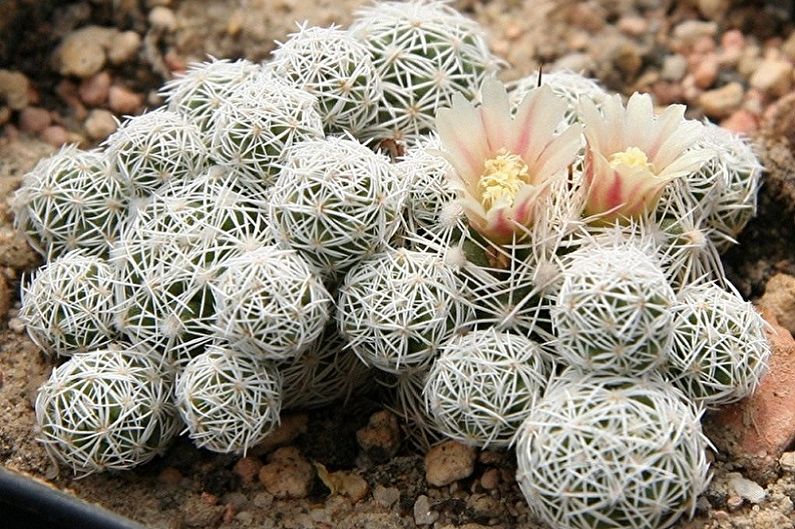
Notocactus
A medium-sized spherical home-made cactus, notable for its stiff, tough spines. It begins to bloom in a few years. Flowers are quite large, but this species is not valued for them.
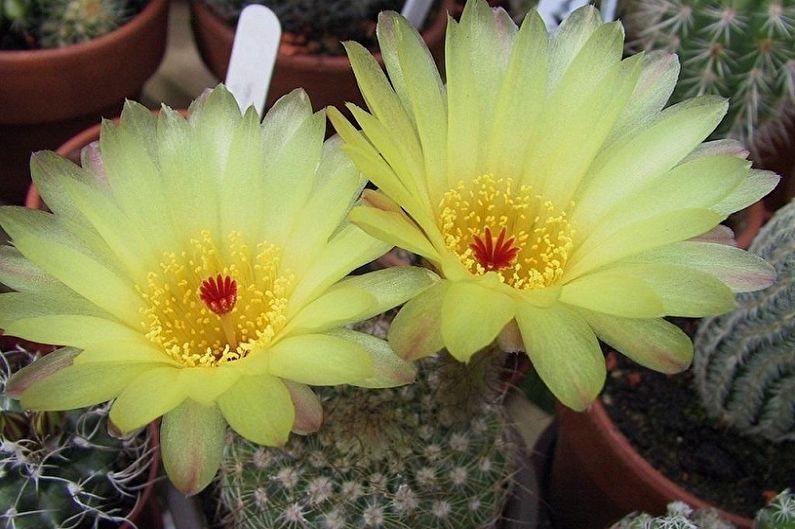
Astrophytum
At first it resembles a ribbed ball, which turns into cylinders as it grows. Bright yellow flowers resemble daisies. They appear in the summer and sometimes reach 30 cm in diameter. Spines - straight or curved, depending on the particular variety.
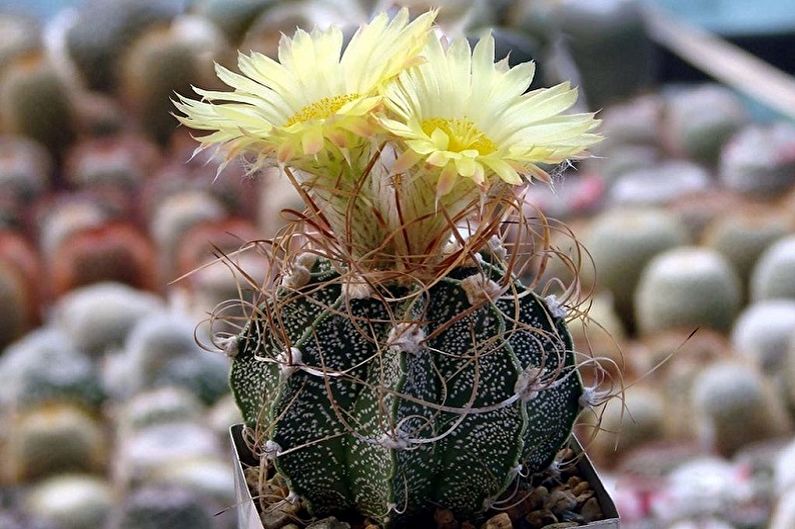
Rebucius
Miniature variety with spherical five-centimeter stems. Every year, Rebucius pleases with small orange flowers. There are larger varieties, up to 10 cm.
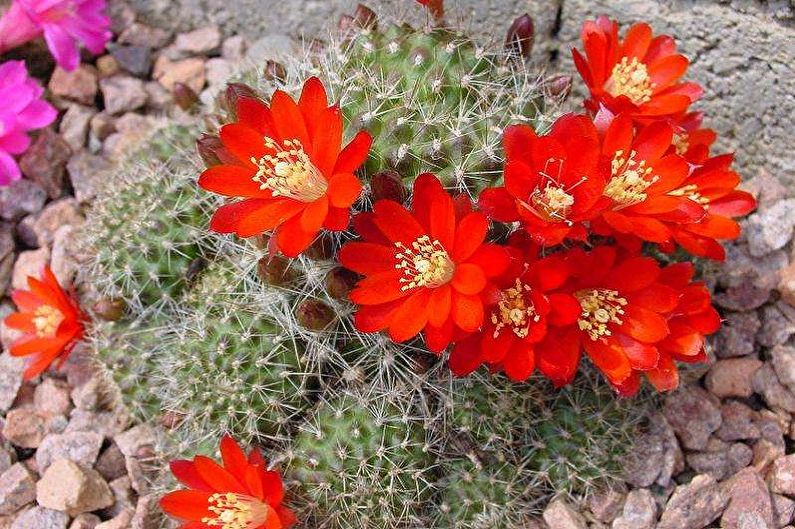
Kleistocactus Strauss
This look is also popular among designers, although it is quite large. Adults grow to a meter. The surface is covered not only with spikes, but also with whitish villi, due to which the clematocactus seems silvery from a distance.

Home Cactus Care
Due to the variety of varieties and subspecies, it is difficult to derive a single care scheme for all cacti. But there are general recommendations that you can focus on.
Maintain a moderate temperature in the room. Winter minimum is about + 13C. Although most varieties easily tolerate short-term frosts, there is no need to abuse it. The maximum temperature of up to + 35C home cacti tolerate without problems.
Cacti always need light, especially in winter, but direct scorching sunlight is still best avoided. In the hot summer months, create a slight shadow for flowerpots on the south side
Do not place the cactus you just bought near other plants. The first step is quarantine, adaptation and transplantation.
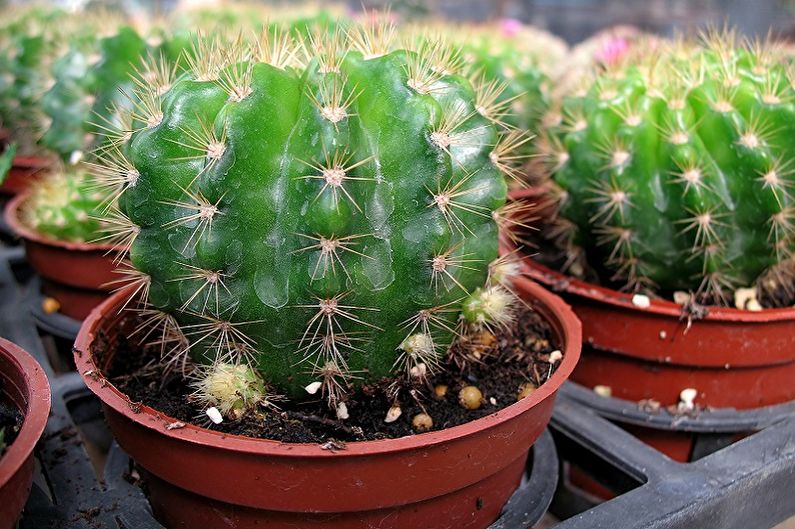
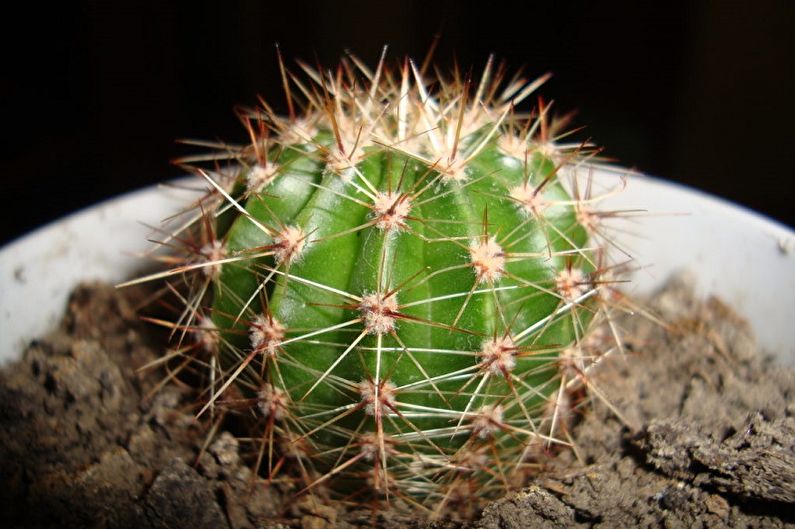
Watering and humidity
In spring, the irrigation scheme is standard - as the topsoil dries. Take warm, settled water without impurities. As it begins to cool, gradually reduce watering. In the fall and winter, feel free to leave the soil almost dry. The amount of water at this time is minimal so that the root does not dry out, and the plant does not wrinkle.
Contrary to stereotypes, a cactus should not be sprayed, with the exception of some individual species. The air may be dry, but it must be fresh.

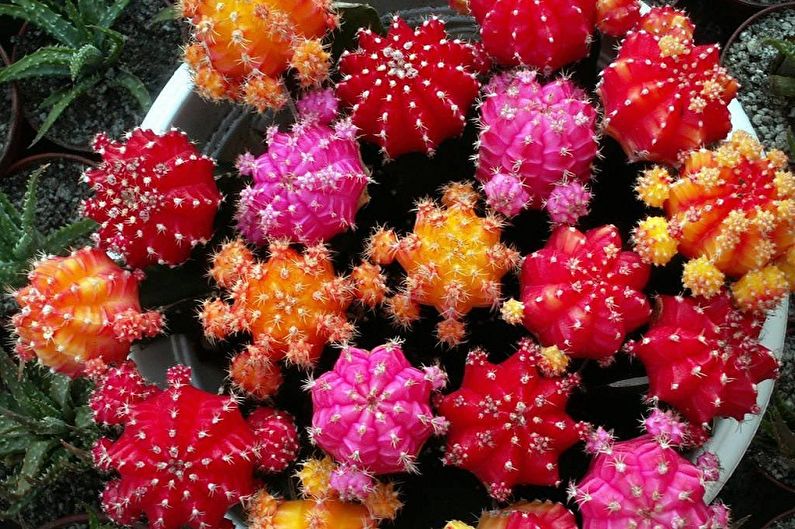
Transplantation and reproduction
Growing a cactus from seeds at home is long and impractical. But in most varieties, even small cuttings take root quickly and easily. Do this in the warm season, so as not to worry about maintaining the temperature and humidity conditions. First, dry the cuttings a little, leaving them for a couple of days, and then plant them in peat compost.
If you want to work on seeds, then do not forget about the effect of the greenhouse for seedlings, and most importantly - observe the temperature regime of + 22 ... + 27C.
Young cacti are transplanted annually, adults - only as needed. To do this, take a pot larger than the previous one. It is better to carry out such procedures in the spring. Try not to damage the delicate root. Also make sure that the stalk of the cactus does not go underground - there it begins to rot.

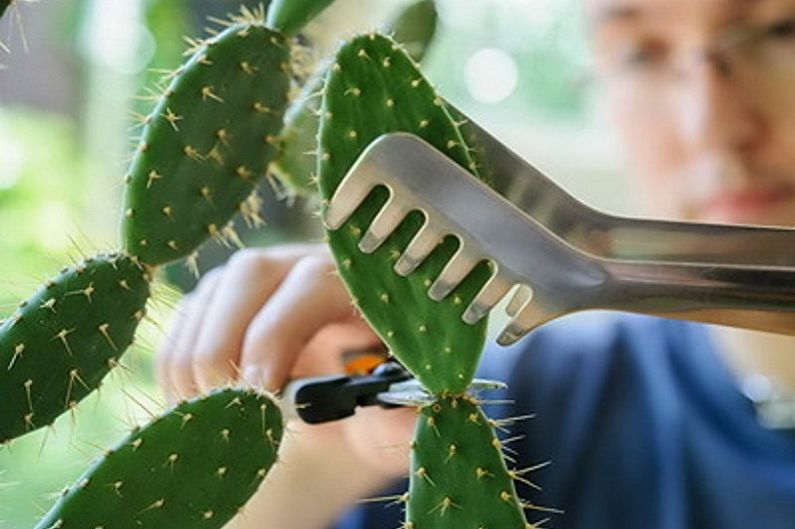
Pest and Disease Control
The most common disease that affects cacti is stem rot. It appears brown spots. To get rid of it, you will have to remove the damaged areas and treat the plant with disinfectants. The most common reason is improper conditions of detention, and especially - too high humidity.
Some varieties are very difficult to bring to flowering. This is not a disease. They just require conditions that are as close as possible to natural conditions, which are not so easy to reproduce in an apartment. Remember that most plants bloom only at a new growth, and for this you need to observe a regime of activity and dormancy. Also, intense flowering stimulates a cramped pot. If it is too spacious, most of the resources go to the development of the rhizome, and not the ground part.
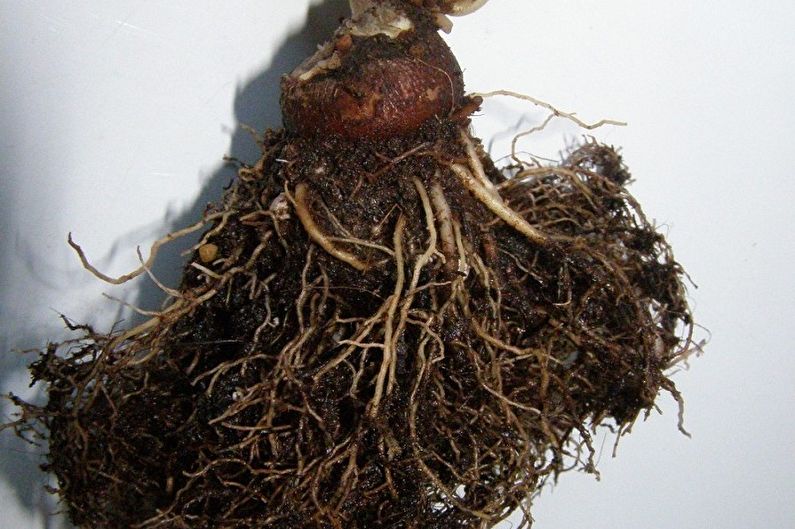
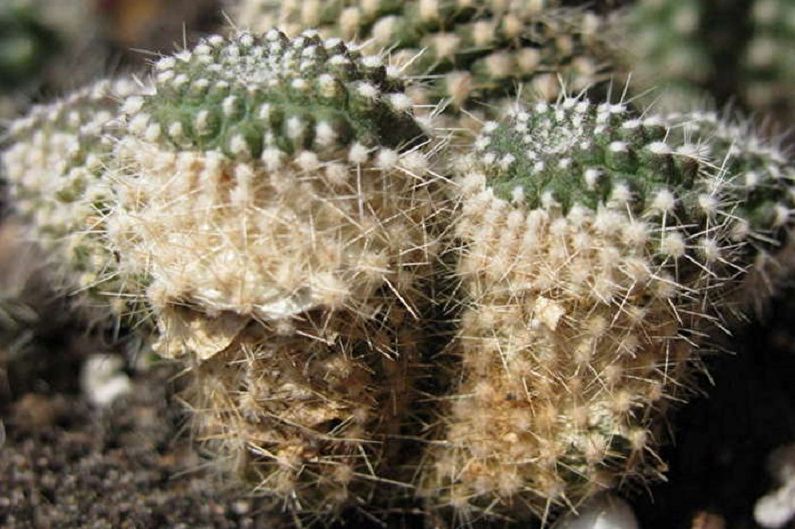
Homemade Cacti - Photo
It has long been a dream to have decorative unpretentious cacti, but have not yet decided where to put them? Check out our selection of photos with fresh ideas and options. Enjoy watching!

